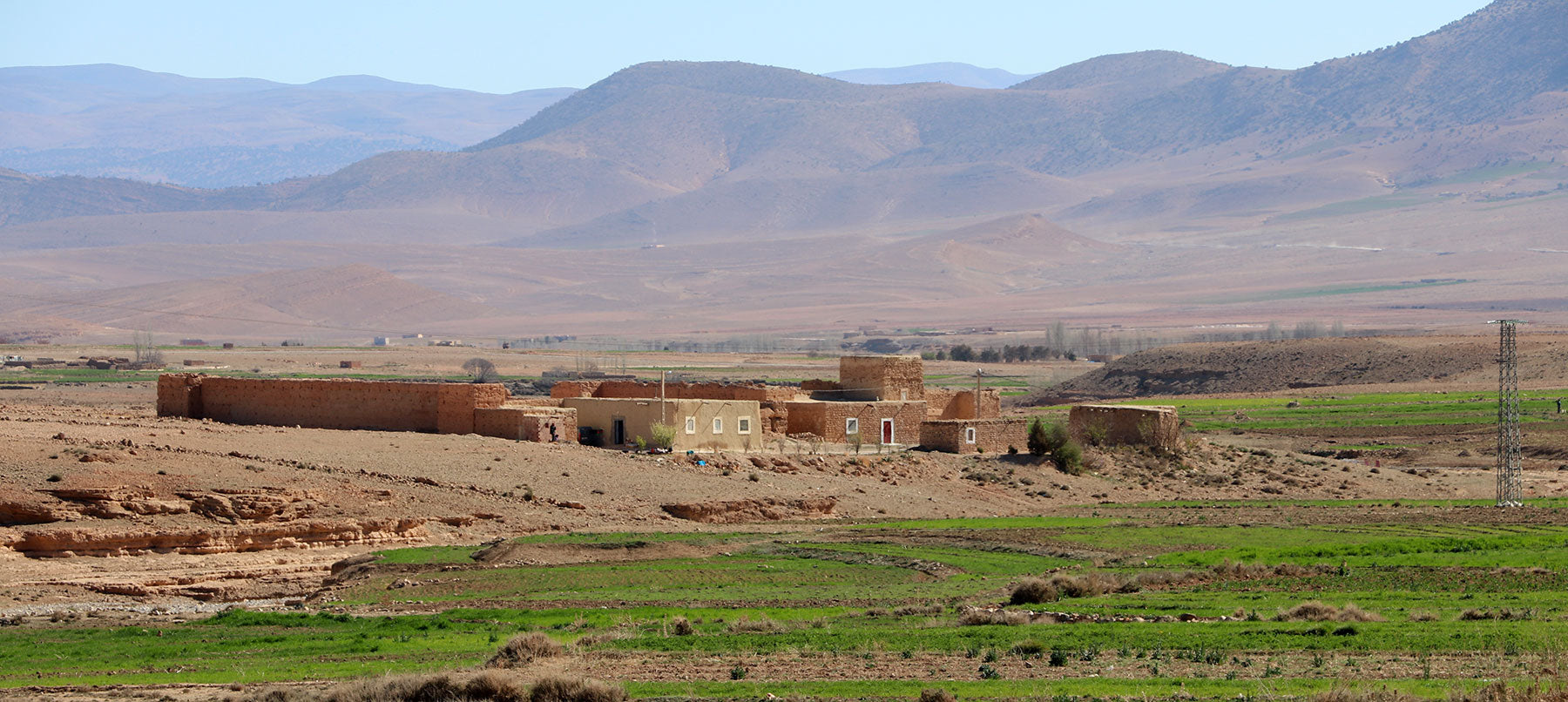Beni Ourain carpets
{{media%20url="wysiwyg/Neues_Projekt.jpg"}} ' alt="">
Beni Ourain carpets
Here you can find out the most important things about your favorite carpets in the shop!
Origin and naming of the original Berbers
First, a short historical introduction. If you would rather know what makes our carpets special, feel free to skip straight to the next heading!
The Beni Ourain carpets are named after a Berber tribe from the northeastern Atlas Mountains in Morocco, the “Beni Ourain”, the tribe lived and lives primarily in the Middle to High Atlas. Beni is Arabic and means “the children” (of) “Ouarain”, Ourain is the name of the tribe, originally that of a family.
The Berber carpets are made from pure sheep's wool from pasture sheep and highland sheep. As different as the sheep are, each carpet is just as different in its color nuance. The color of the classic Beni Ourain carpets ranges from a light beige to an ivory white. A Beni Ourain is designed to be used for many, many years. However, it is important that you are aware that this carpet can change over the years and should also be well looked after. It is a natural process that, depending on the level of use, the wool pile strands can become slightly matted over time. In Morocco, a Berber is traditionally washed once a year; this is also part of the carpet changing process. You can often see this in ancient Berbers, where they have become somewhat thinner and the individual pile threads have become matted. The typical patterns and diamond patterns are either black-brown (from the sheep's head area), but the wool for the patterns and carpets is often also dyed.
The social aspect: Why a traditional Berber?
A plea for the traditional production of Beni Ourain or what is special about the Touda carpets?
The traditional carpets like the ones we have at Touda are woven and knotted by the Berber women of the Middle Atlas at home in their families on self-made looms (both techniques are used in a carpet of this type). We work closely with a number of Berber women. Thanks to the close and harmonious collaboration, as well as the above-average remuneration for their work, the circle of Berber women is constantly growing. Another part of our carpets comes from small cooperatives, which are an association of different Berber women. The women also decide the selling price of the carpets themselves, so the women are always appropriately compensated for their work. In this way we can ensure fair payment in both cases. This is a clear advantage over buying from middlemen or dealing with large mills that can now be found all over the country and that imitate carpets. In this case, the pay is often very poor and the carpets are produced as quickly as possible from low-quality wool. The quality should not be confused with the "imperfection" of a Beni Ourain, its small flaws and blemishes are proof of its authentic, traditional production at home or in small cooperatives. These are mainly patterns that look like they were drawn by hand or edges that aren't quite straight here and there. These carpets are characterized by other qualitative features, both of which have made it a very popular design classic.
Here is an exciting article from the Süddeutsche Zeitung on this topic.
The sample
The typical patterns of Beni Ourain carpets have been passed down from family to family for generations. The patterns are influenced by the very own local culture of each tribe. Sometimes old Berbian characters can be found on the carpets. The younger Beni Ourain patterns, for example, are often very graphic: diamonds, zigzags, lines. In older Beni Ourain you can also find more complex patterns; it is not uncommon for the year and place of creation to be added.
Antique Beni Ourain - older patterns
{{media%20url="wysiwyg/Neues_Projekt_1_.png"}} ' alt="">
Would you like to buy your Beni Ourain directly online?
This link takes you directly to the shop! For more information about our Beni Ourain stay on this page.
The manufacturing process in traditional manufacturing
The wool
The manufacturing process is complex and begins with shearing the wool; the wool often comes directly from the family's sheep. But the wool is not always enough and the family also buys it at a local market. It is important that it is always virgin wool (from a living sheep, because the protective layer of wool is still fully present and no sheep had to die for the wool! The wool is then first roughly cleaned by hand, then several times more washed in the mountain stream, then dried and combed. Once the wool has dried thoroughly, the wool is spun into strong strands that are perfect for knotting. Happy on warm summer evenings with the family or on icy winter evenings by the warming fire. This is usually the case This is about single-stranded wool, but sometimes also about double-stranded wool. During this time, the loom was usually already prepared and the fabric and warp beam was covered with warp threads made of a slightly stronger wool.



Woven and knotted!
Now the Berber women begin knotting and weaving, because both techniques are used in a Beni Ouarain. It is not uncommon for several women from the family (or even from the neighborhood) to work on a carpet. Of course, people also like to tell old stories or exchange news from the village! Several rows are woven alternately and one row is knotted. This creates an incredibly dense and high-quality fabric. This can be seen particularly on the back of the carpets! When working, the carpet is slowly rolled up at the bottom so that the Berber woman can always work at the optimal height for her. Once the desired length has been reached, the carpet is carefully removed from the frame (rolled up) and finished. For manufacturing reasons, fringes are usually only processed on one side; it is rare to find Berbers with fringes on both sides.
Completion
Good and neat crafts need two ingredients above all: skill and time! This can almost only be found in traditional production. When the carpet is finished, it is washed in the nearby mountain stream or at another washing place. This is primarily to remove dust and dirt but also to make it more supple, as the carpets become silkier and softer with each wash. Excess wool is also effectively removed in this way; at Touda we usually wash the carpets 1-2 times before selling them. After cleaning, the carpet must be allowed to dry thoroughly and, above all, in the sun (to avoid yellowing) and, if necessary, be pulled into shape a little.
Characteristics
Its dirt-repellent properties and high self-cleaning power, especially in fresh air together with sunlight, characterize a good Berber. Our carpets are neither processed with chemically aggressive substances nor other harmful agents. This is also a characteristic of traditional production, where the good old curd soap is still used. Sheep's wool is also very elastic, antibacterial and antifungal. The temperature-balancing and heat-retaining properties make the carpet a very pleasant home accessory in winter and summer. In addition, wool is a renewable raw material and the production of Beni Ourains is therefore absolutely sustainable. The sheep herds in the Atlas Mountains still live in natural grazing or still migrate across the country with shepherds, which is why all our families get their wool either from their own sheep or from the local shepherds.
This creates a unique and long-lasting Berber carpet, timeless and can be combined with almost any interior style. A carpet that can be passed down from generation to generation. We would be happy to advise you on your furnishings and choosing the right Berber.
Tip: Comprehensive advice by email or telephone is always included. Just talk to us! Email: info@touda.de






Answer questions:
"I'm looking for a particularly bright Beni Ourain, how can I recognize this one?"
- The Berber carpets are made from a purely natural product that is always subject to variations in color nuances. There are no pure white carpets because the wool would have to be bleached and wool always has a natural, slightly cream-colored tone. Bleaching would have very damaging effects on both women and the wool. There are variations from a light ivory white to a beige, cream tone. But the care taken when washing the wool can sometimes play a role in the color of the wool. We often have carpets with very different shades, both very light and slightly cream-colored models. You can see this quite clearly in the photos in the shop. We are also happy to send you unedited pictures without studio light upon request. Please simply send a request to info@touda.de.
-
"How can I be sure it is an original Beni Ourain?"
- This is a very complex matter and we only try to give a rough guide to the best of our knowledge. You are also welcome to contact us personally by email or telephone. We would be happy to provide you with comprehensive information on this topic. In general, here at Touda we differentiate between traditionally produced Beni Ourain and "so-called" Beni Ourain, which have been imitated from the originals and are now produced all over Morocco. We sometimes buy the carpets from small women's cooperatives, directly from the Berber women or, in isolated cases, from a dealer we trust, whom we are allowed to accompany and who gives us an insight into their entire work. Furthermore, our own women's cooperative is already being set up. This means we can always trace the origin of a carpet. Traditionally produced and original Beni Ourain can be recognized, among other things, by the type of wool and the way in which they were knotted. They often also have minor flaws in the pattern or within themselves, which is, among other things, proof for us that they are still from traditional sources Handcrafted.
-
" I didn't find a suitable rug, can I get a custom rug?"
- If there is nothing in the current selection, you can send us a message. We are happy to take your wishes into account for the upcoming delivery, but all carpets are always unique and no two are alike. Custom-made products may also be possible on a small scale in close cooperation with the Berber women. We will be happy to advise you comprehensively by email info@touda.de, by telephone (please send us your telephone number, you can also reach us at 0221/16895119 - the office but is not always staffed all the time) or via the online chat and the contact form on our site.
-
“Can I send the carpet back if I don’t like it?”
- Yes of course! You have a 14-day right of withdrawal/return !
-
“Do you also have other sizes?”
- What you see in the shop is usually available (if marked as available), the most common sizes are 150x250, 200x300m and runner sizes, but there are no absolutely fixed standard sizes because our carpets do not come from large weaving mills but are still at home with them Berber families are made. The approximate dimensions given are only slightly more common than other sizes. If you don't find the right size in the shop, please send us an email to info@touda.de.
-
“Do Beni Ourain carpets shed?”
- Sometimes more and sometimes less! The carpets still 'sweat' wool, especially at the beginning, so we always recommend gently vacuuming the carpets regularly (or even brushing them out), but over time it will become significantly less! Vintage carpets in particular hardly lose any wool. Traditional cleaning is particularly good for the carpets; excess wool is removed again! A good carpet laundry knows how to clean a Berber carpet correctly!
-
"How can I care for my Beni Ourain, how should it be cleaned?"
- When you purchase your carpet you will receive detailed care instructions. You are welcome to contact us at any time after your purchase!
More questions? Feel free to send us an email to info@touda.de

Articles about our Beni Ourain:
Enter customer opinion:
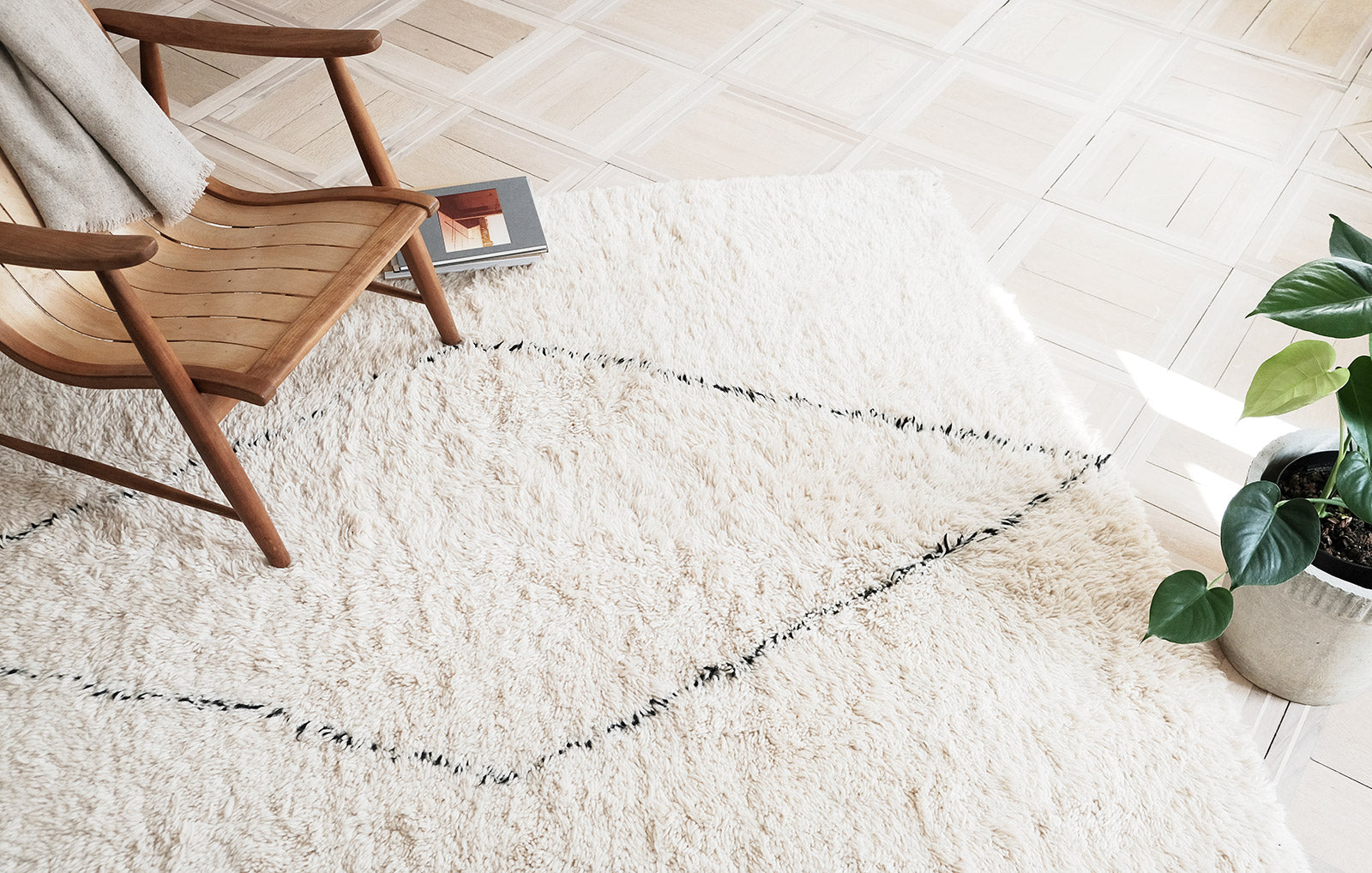
Customer opinions
We have been delighting our customers since 2010! We love, what we do! You are always welcome to leave us honest feedback!
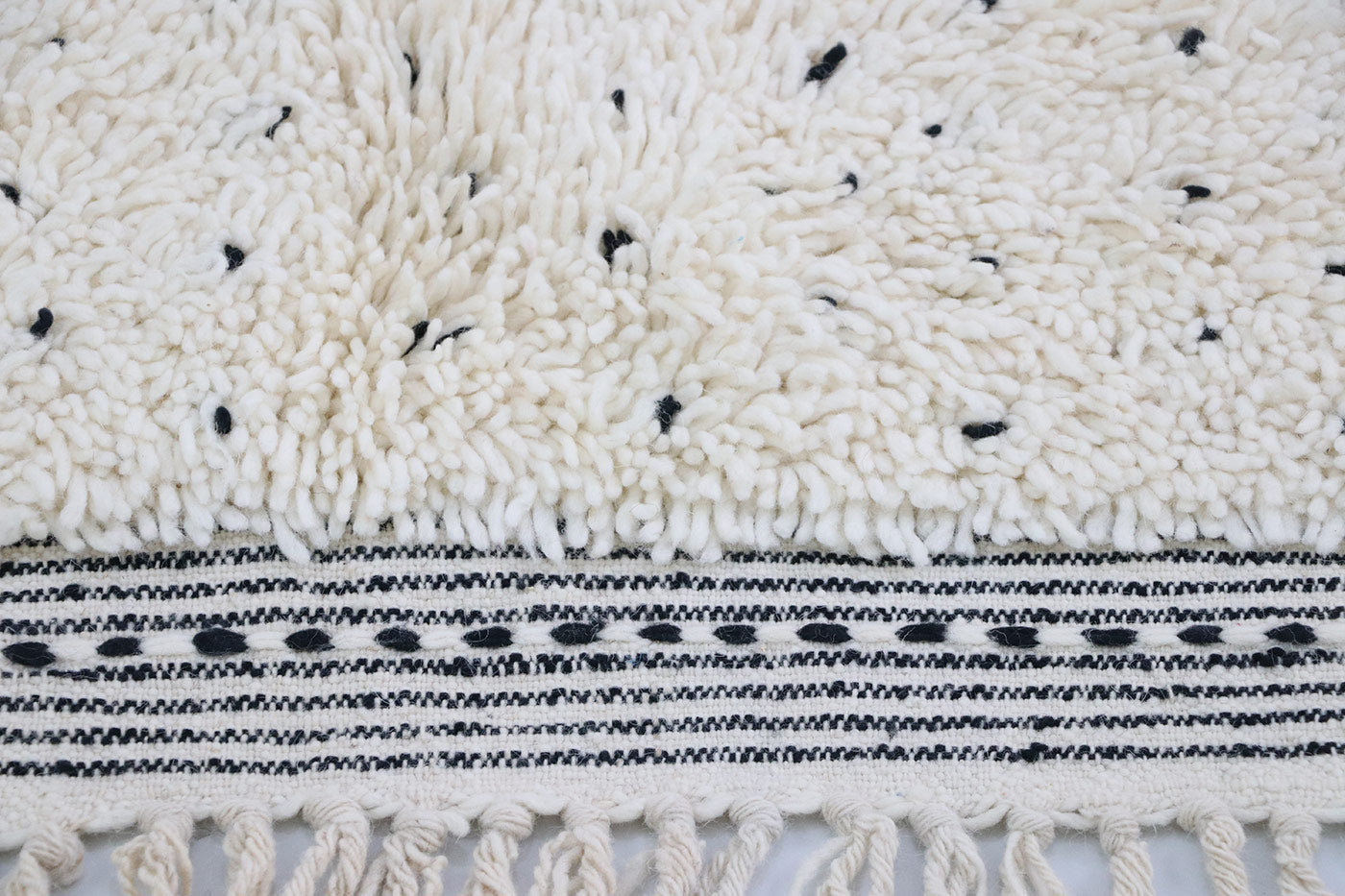
Beni Ourain
Der Beni Ourain ist ein Berberteppich aus dem Herzen des Mittleren Atlas Gebirge in Marokko. Die außergewöhnlichen Teppiche aus reiner Schurwolle werden bei uns noch ganz traditionell innerhalb der Berberfamilien gefertigt.

Beni Mrirt
Der Beni Mrirt Berberteppich stammt aus der Region Mrirt-Khenifra. Der Berberteppich ist, ähnlich dem Beni Ourain, mit sehr hochwertiger Wolle geknüpft, unsere Beni Mrirt werden noch traditionell in kleinen Kooperativen hergestellt.
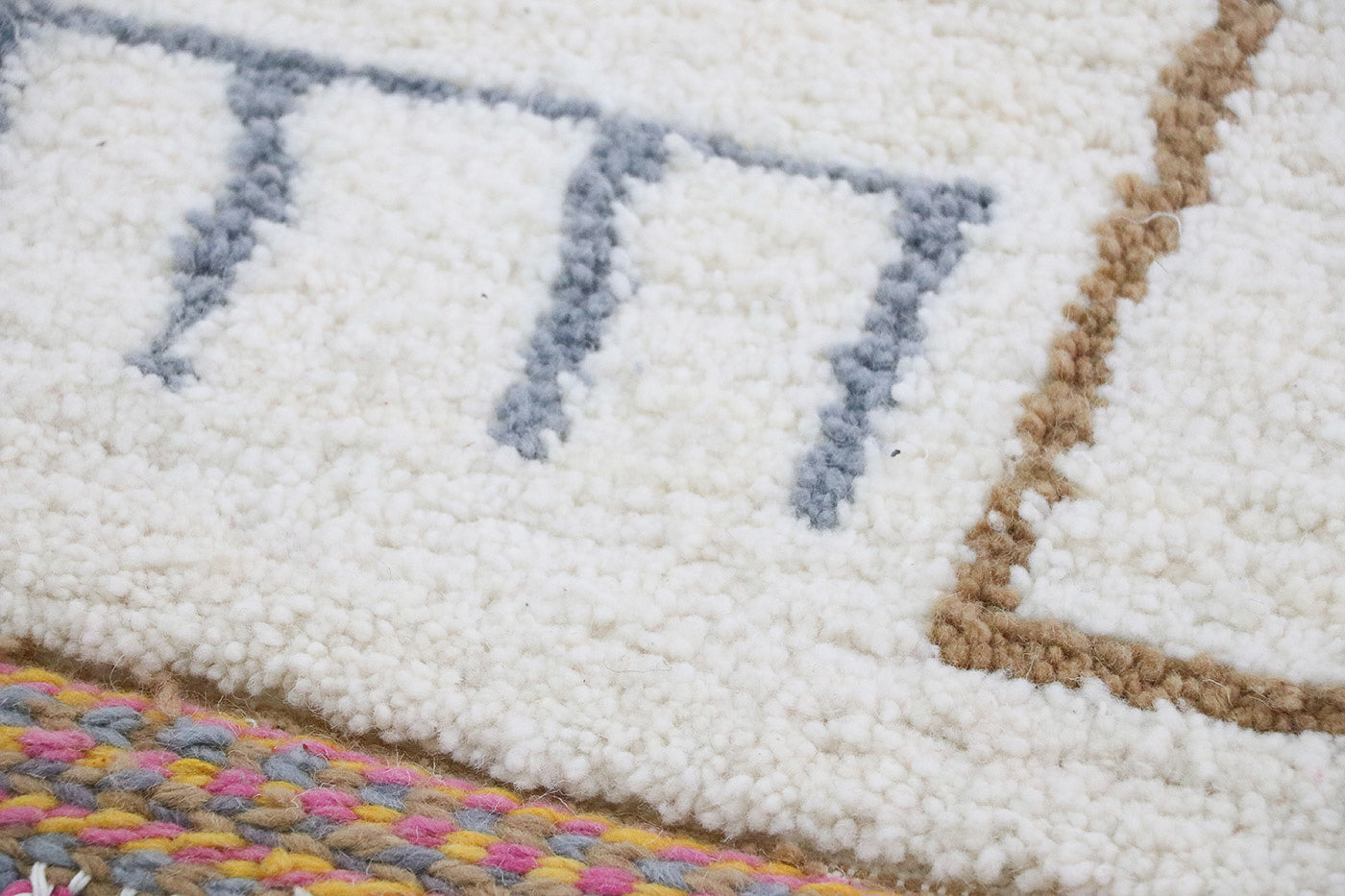
Azilal
Der Azilal Teppich stammt aus der Region Tadla-Azila, der Ebene und dem Hohen Atlas Marokkos. Die Knüpfung der Azilal Teppiche besteht aus einem einfachen Knoten und einem typischen, kurzen Flor.
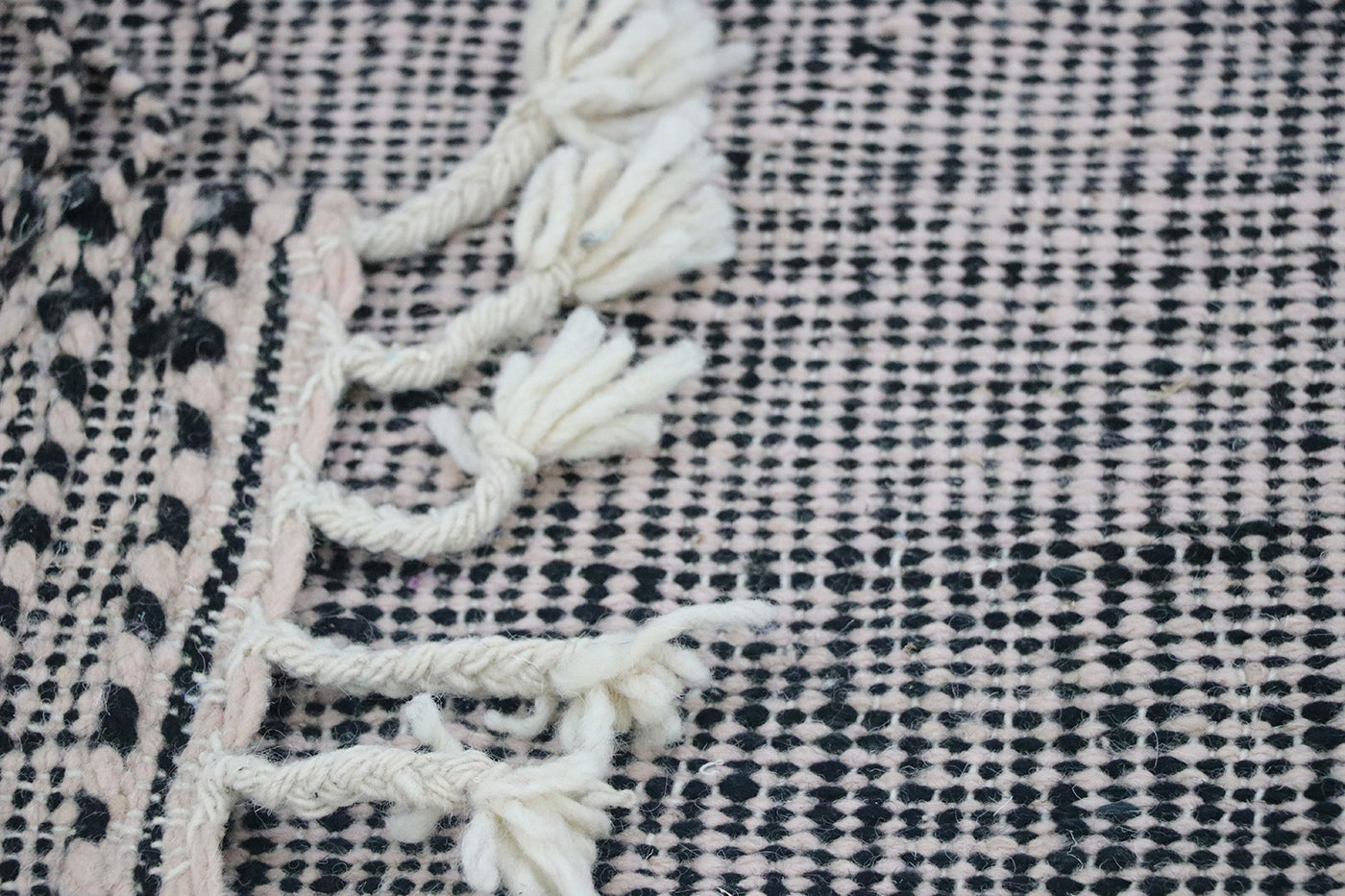
Kelim
Das Kunsthandwerk des Webens, vor allem das der Kelim Teppiche, ist noch in ganz Marokko verbreitet. Der Berberteppich wird flach gewebt in vielen zahlreichen Musterungen.
